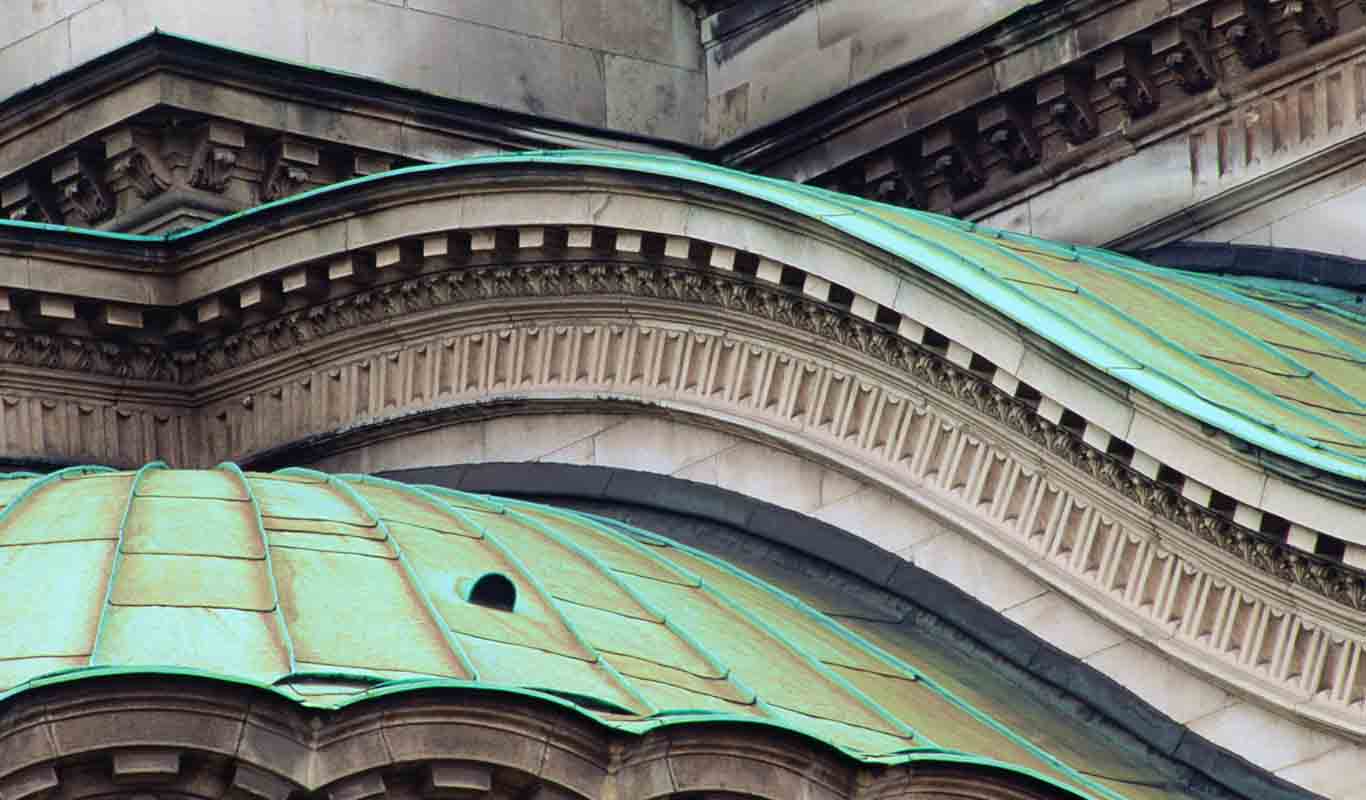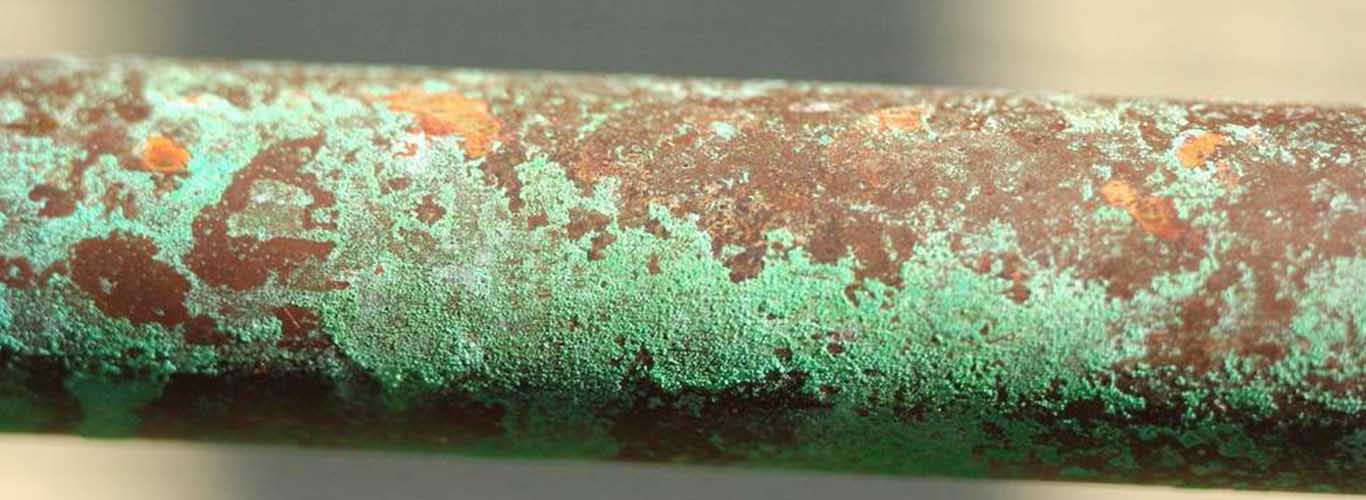The Reason Behind Copper Turning Green Over Time
On This Page

Copper is a shiny orange colour metal that turns green due to a process called oxidation. When exposed to moisture and air for a long time, copper undergoes a chemical reaction with oxygen. It forms a layer of copper oxide on its surface. The initial copper oxide layer is typically reddish-brown in colour.
As the oxidation process continues, the copper oxide layer reacts further with carbon dioxide and water from the atmosphere to form a greenish compound called copper carbonate. This greenish layer is commonly known as copper patina or verdigris. That is why copper roofs and pipes turn green over time.
What is Oxidation Reaction?
Oxidation is a chemical process involving a substance’s loss of electrons. It occurs when a substance reacts with oxygen or other electronegative elements, resulting in a chemical reaction that alters the composition and properties of the substance.
The oxidation process is accelerated in the presence of moisture or water vapour because water molecules can facilitate the transfer of electrons between copper and oxygen. As a result, copper objects exposed to air and moisture undergo gradual oxidation, forming a layer of copper oxide on the surface.
What is Copper Patina?
The formation of the green patina layer is a natural protective mechanism for copper. It acts as a barrier between the copper and the surrounding environment, preventing further corrosion or degradation of the metal. The patina layer also gives copper a distinct aged or weathered appearance, which is often considered aesthetically pleasing.
It’s worth noting that the rate of copper oxidation and the development of the green patina can be affected by factors such as temperature, humidity and the presence of certain chemicals in the environment.

Why is the Statue of Liberty Green?
The Statue of Liberty appears green because of the natural weathering process that occurs on its copper surface. It is made of copper sheets, which are about 2.4 millimetres thick. When unveiled in 1886, it was shiny brown, similar to a new penny.
Over time, exposure to the elements, particularly air and moisture, caused the copper surface to undergo oxidation. The copper reacted with oxygen and other environmental elements, forming a layer of copper oxide on the surface. This initial layer is typically brownish in colour.
As further weathering occurred, the copper oxide layer reacted with carbon dioxide and moisture in the air to form a greenish patina. This patina consists mainly of copper carbonate and copper sulphate compounds. It acts as a protective layer, preventing deeper corrosion of the underlying copper.
The green colour of the patina is due to the specific combination of chemicals formed during the oxidation process. The Statue of Liberty is located in a coastal environment, which exposes it to saltwater spray and other elements that can accelerate the oxidation process.
The iconic green colour of the Statue of Liberty has become a recognisable symbol, and efforts are made to preserve and maintain the patina while ensuring the long-term stability of the copper structure. Regular cleaning and conservation measures are taken to protect the statue and its green appearance.
How to Remove Green Colour from Copper Pipes?
To remove the green colour (patina) from copper pipes, you can use various methods depending on the severity of the patina and your desired outcome. Here are a few common approaches:
Lemon Juice and Salt:
Create a paste by mixing lemon juice and salt. Apply the paste to the green areas of the copper and let it sit for a few minutes. After that, scrub gently with a soft cloth or a non-abrasive brush. Rinse the copper pipe with water and dry it thoroughly.
Vinegar and Salt:
Mix salt and vinegar in equal parts, apply the mixture to the copper pipe, and let it sit for a few minutes. Gently clean the surface of the pipe using a soft cloth or brush, followed by a thorough rinse with water and complete drying.
Tomato Ketchup:
Apply a small amount of tomato ketchup directly to the green areas of the pipe. Then, gently rub the surface with a cloth or sponge for a few minutes. Rinse with water and dry thoroughly.
Commercial Copper Cleaners:
There are various commercial copper cleaners available in the market. Follow the instructions on the product for the specific cleaner you choose, as methods may vary.

Frequently Asked Questions
Does Copper Rust Like Iron?
No, copper does not rust. It forms a patina, which is a greenish layer, but it is not the same as rust.
Do Brass and Bronze Turn Green?
Yes, brass and bronze contain high concentrations and can develop a greenish patina over time due to oxidation. This patina is often referred to as “verdigris.”
Does Stainless Steel Turn Green?
No, stainless steel does not typically turn green. It is highly resistant to corrosion and maintains its appearance over time without developing a green patina like copper or brass.
How to Age Copper Artificially?
Copper can be aged artificially by using various techniques, such as applying a patina solution or accelerating the natural oxidation process through exposure to certain chemicals or environments. These methods can give copper an aged or weathered appearance.
When Did the Statue of Liberty Develop Its Green Hue?
The Statue of Liberty started developing its green patina within the first 30 years after its unveiling in 1886. The exact timeline for the development of the patina varied based on environmental factors, such as exposure to air, moisture, and saltwater spray.
Do You Need to Replace Green Copper Pipes?
Severe discolouration may indicate corrosion or degradation, which can lead to leaks or other plumbing issues. It’s advisable to have them inspected by a professional plumber to determine if replacement or repair is necessary.
